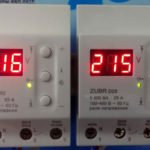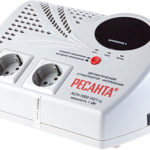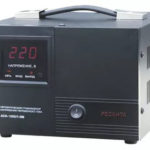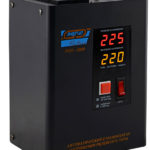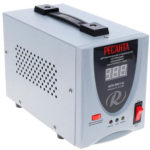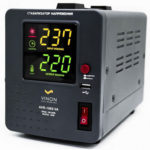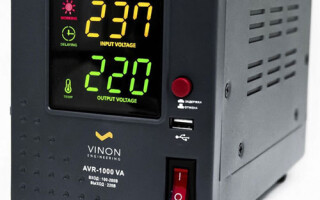Voltage fluctuations create problems for all household appliances. It can be elementary malfunction and fatal breakdowns. A good stabilizer will be the savior. It will improve the quality of electricity and protect your property. The main thing is to make the right choice.
Contents
What kinds of regulators are suitable for the house
The purpose of the stabilizer is to automatically maintain the voltage at the output in the specified parameters, regardless of changes in the power grid. With this task modern devices cope successfully. Each type has characteristic features. Stabilizers are used in the home and used in industry. The following stabilizers are suitable for power supply of the house, apartments and summer cottages:
- Electronic;
- Relay;
- Servo (electromechanical);
- Inverter;
- Hybrid.
Electronic. The main components are a transformer, microprocessor and semiconductors. The microprocessor analyzes the voltage and switches the transformer windings by means of thyristors or triacs. At the output we get a stable voltage of specified parameters. They are widely used in homes and have proven to be reliable and accurate devices.
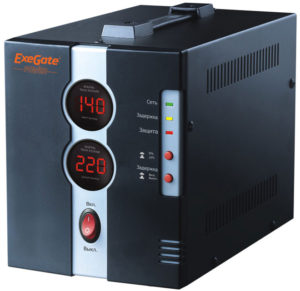
Advantages of semiconductor devices:
- responsiveness;
- large range of line voltage;
- noiselessness;
- reliable protection system;
- compactness;
- long service life.
Disadvantages:
- Voltage dependence of power - the lower the incoming voltage, the less power the stabilizer can provide;
- step regulation (almost invisible).
Relays. They are popular due to their low cost and simple design. The microprocessor controls the switching of transformer windings by means of a relay. Therefore, during the operation of these stabilizers you can hear a characteristic clicking sound.
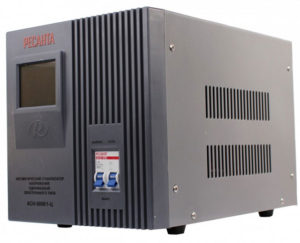
The advantages of the relay devices are:
- size;
- low cost;
- a wide range of ambient temperature;
- tolerance to short-term overloads.
Disadvantages:
- Low response speed;
- step regulation;
- Creation of electromagnetic interference;
- noise;
- frequent failures in the post-warranty period;
- relatively short service life.
Servo-driven (Electromechanical). Stepless stabilization is provided by an electric motor moving a graphite contact along the transformer windings. Due to the peculiarities of the design, suitable for operation in networks without sudden changes (surges) in voltage.
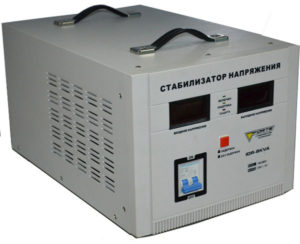
Advantages:
- high accuracy;
- smooth regulation;
- large range of incoming voltage;
- ability to work at subzero temperatures;
- overload resistance;
- low cost.
Disadvantages:
- Low speed of regulation;
- size and weight;
- increased noise level;
- electromagnetic interference;
- presence of graphite contact and moving parts subject to wear.
Inverter. The most advanced type of stabilizers. In these devices there is no transformer. The voltage is stabilized by semiconductors and capacitors through a double conversion of electrical energy. Alternating current from the supply network is converted into direct current, then an inverter into alternating current. At the output we get a stable voltage with excellent parameters.
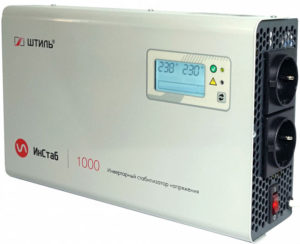
Advantages of inverter devices:
- high accuracy;
- high speed;
- smooth regulation;
- Reliable protection of the stabilizer and customers;
- a very wide range of incoming voltage;
- small size and weight;
- low noise level;
- long service life.
Disadvantages:
- Lack of power reserve;
- high cost.
Hybrid. Depending on the working conditions, relay or servo-driven (electromechanical) stabilization can be activated. Combines the advantages and disadvantages of the corresponding types of devices. They are distinguished by a high price, complexity of design and maintenance.
The main parameters of voltage stabilizers
All other things being equal, the first thing to pay attention to a number of features of the stabilizer:
- Power;
- Single-phase or three-phase;
- The accuracy of voltage stabilization at the output;
- The range of input voltage;
- The presence of Bypass mode.
Output Power Stabilizer
The output power depends on the load the device can handle. The active power of household electrical equipment is denoted in watts (watt). Often in the manual and on the case of the stabilizer figures are given in VA (volt-ampere) and W (watts). In this case, everything is clear and comparable values in watts will determine the total power of electrical appliances in the house and the required characteristic of the stabilizer. Sometimes websites and promotional materials indicate the values only in volt-amperes, it can be VA or VA. Then the situation is a little more complicated and you need to recalculate.
Reference. 1 kW = 1000 watts, 1 kVA = 1000 VA. Simplified translation of the power indicator of the stabilizer is made by the formula VA * 0.7 = W or vice versa W * 1.43 = VA.
Examples:
- The output power of a stabilizer is specified as 8000 VA. The active power will be 8000 * 0.7 = 5600W or 5.6kW.
- The power of all appliances is 6000 watts. The required value of the stabilizer 6000 * 1.43 = 8580 VA or 8.6 kVA.
Calculation of the stabilizer power

The first, the simplest version of the calculation. To determine the total power add up the values of all appliances without exception. It may be listed on the cabinet, manual or data sheet of the equipment. Light bulbs, power supplies, televisions, computers, pumps, set-top boxes, air conditioners, washing machines, boilers, electric stoves, meat grinders, towel racks, bread makers, coffee makers and more. Everything goes into the calculation. This is the simplest and most reliable way.
The second option involves selective metering of electrical equipment. It is used if the consumer is sure that he can control the simultaneous activation of the optimum number of appliances. They count a certain group of equipment included at the same time, sum up their load and add a couple of kilowatts.
The third can be applied if the most expensive equipment is connected on separate lines. In this case, only the most valuable appliances are connected to the stabilizer and the load is counted by them.
Reference. Most modern televisions, boilers, irons, heaters, power supplies and lights are rated between 140 and 240 volts. Check the manual or the rating label for details. If the incoming voltage does not go beyond these limits, the lines with such electrical equipment can not be connected to the stabilizer.
What power reserve is required by the stabilizer?
The reserve is necessary for optimal operation of the device without failures and shutdowns. When calculating, you must take into account the starting currents of electric motors plus a reserve of 20 - 30%.
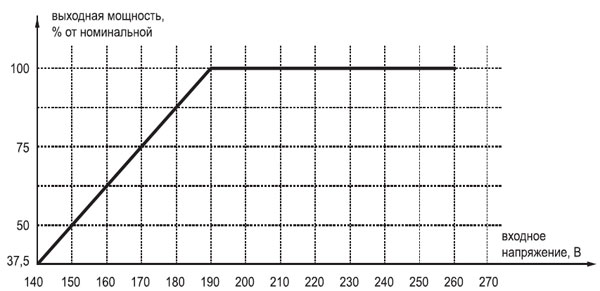
Technique with an electric motor during start-up consumes 3 - 4 times more electricity than the nominal parameter. Chance of simultaneous starting of all electric equipment is extremely low. Therefore, calculation of reserve for starting current, make on one the most powerful device.
Example: total power of all consumers in the house 3000 W, plus air conditioner consumes 700 W, at starting 700 * 4 = 2800 W. The total needed is 3000 + 2800 = 5800 watts. Take into account the reserve of 30% (5800 * 1,3 = 7540) and we get 7,6 kW. The power of the stabilizer is 7,6 * 1,43 = 10,9 kVA or 10900 VA. The closest to the characteristics in the store is 11000 or 12000 VA.
At first glance, it seems that too much. It is not. The reserve will ensure reliable operation for a long time.
Single phase or three-phase?
For a single-phase network, choose only a single-phase device.
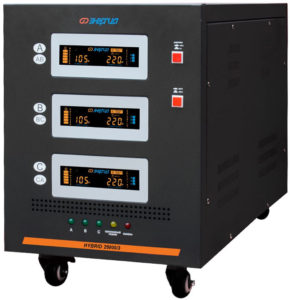
A three-phase network can include one three-phase or three single-phase. The choice depends on whether there are three-phase devices in the house, such as a pump motor or a circular saw. If there is such equipment, the choice is definitely a three-phase device. If not, it is advisable to buy three single-phase stabilizers. They are easier to transport and more convenient to operate. Switching off one will not leave the whole household without power.
Accuracy of output voltage stabilization
All regulators and measuring devices have an error. Stabilizers are no exception. Most of them have an error of up to 5, sometimes up to 7.5%. That is, the output voltage may not be 220 volts, as on the display, but 203.5 or 236.5. For household appliances, this range is comfortable. Problems may arise only with specific equipment. Much more important is the next indicator of the performance of the stabilizer.
Input voltage range
To determine this characteristic, it is necessary to measure the voltage in the external network. Measurements are taken at different times of the day and different days - weekdays, weekends and holidays. According to the results, you can choose a stabilizer. Some models operate at very low 110 V and very high 330 V.
Important! Many stabilizers have a drop in power when the incoming voltage decreases. Therefore, it is necessary to carefully study the dependence of power on the mains voltage. If necessary, provide additional power reserve.
Bypass mode
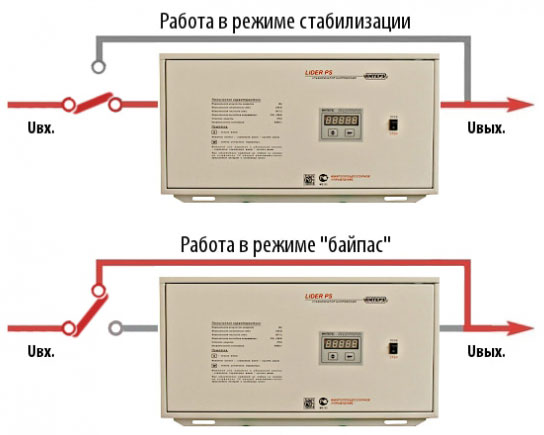
In certain cases, it may be necessary to exclude the device from operation, preserving the power supply to the house. Bypass mode - the stabilizer bypass mode. Stabilizers equipped with this switch can be easily disconnected from the network. This allows for preventive maintenance or repair work of the device, keep the power supply in critical situations, just give the stabilizer to rest.
It is desirable to choose a device with such a possibility. What to do if the stabilizer fits all the parameters, and the Bypass mode is not provided? Not a problem. A qualified electrician will mount an external switch.
Other parameters
Built-in protection
In addition to voltage stabilization, devices must also perform some protective functions. There are three main ones:
- High voltage protection. Alarm is triggered when 260 to 270 volts are exceeded.
- Low voltage protection. Lower threshold is usually set at 110 - 140 volts.
- Short-circuit current protection.
Expensive models are equipped with lightning protection (pulse overvoltage) and electrical noise neutralization filters. These are useful functions, but for the stable operation of electrical equipment enough and the first three.
It is desirable that the stabilizer be equipped with thermal sensors. They will protect from spontaneous ignition under critical overloads and in extreme situations.
Operation at minus temperature
This characteristic of the devices depends on the place of installation. The best place with a temperature between 0 and + 45 °C. Within these limits most stabilizers work. Not many models can withstand frost well. It is worth paying attention to this characteristic if the device will be installed outdoors.
Presence of information display
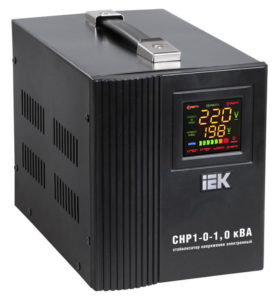
For mainline stabilizers that supply power to the entire household, the display is mandatory. Without it, only individual low-power devices can work. Usually reflects the incoming and outgoing voltage, power, errors. In a critical situation, you can understand what happened in the network, at home or with the stabilizer.
Timer to turn on after shutdown
Most stabilizers during the initial turn on delay the voltage to the consumer. The same happens in case of emergency shutdowns. The device waits to see if the situation happens again. The possibility of setting a delay time depends on the model. On some models the time is preset and does not change.
Noise level
If installed in a residential area, the noise emitted by the device may be the primary characteristic. The noisiest are the relays. They make a constant clicking noise. Next, in descending order of loudness, are the servo, electronic and inverter. All three types make little noise when in good working order. The cooler does not make a sound louder than a computer cooler. An increase in volume signals a possible malfunction and should attract the owner's attention.
Mounting and installation method
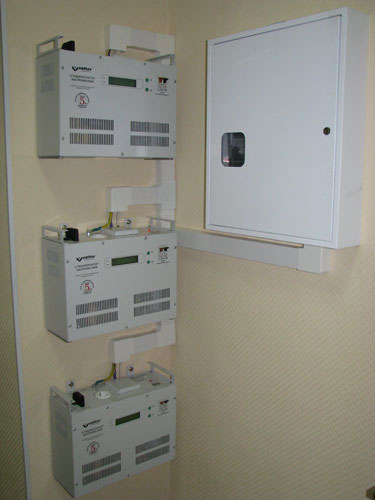
According to the method of installation stabilizers are divided into wall-mounted, floor-mounted and desktop. Desktop are plugged into the socket and are used for individual use. Wall-mounted installed in homes, apartments and outdoor cabinets. They are easy to maintain and do not get tangled underfoot. The floor-mounted version of the devices has advantages. They are easy to hide under a table or in a corner.
Forced cooling fan
There are two types of cooling - forced and natural. It depends on the type of device. Forced cooling is accompanied by a little fan noise and minimal energy consumption.
Warning! Stabilizers cannot be installed in confined spaces (cabinets and niches) that do not have a natural air supply. Do not cover with cloths, films or other materials to prevent air flow. Otherwise overheating and combustion is possible.
Popular manufacturers
Stabilizers sold in Russia are made in Russia, Ukraine, Belarus, China and Italy.
Russian devices of the brands Energy, Leader and Stil. All produce reliable products of different types, one- and three-phase, power from 400 to 30000 VA
Energy. Produces stabilizers of two brands Energy and Progress. These are semiconductor (thyristor) and relay devices. You can choose a model with a wide range of incoming voltage and ambient temperature.
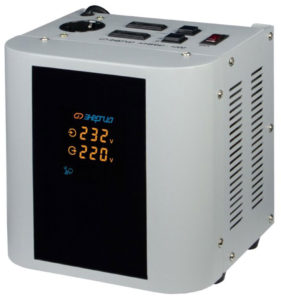
Leader. The trademark belongs to "NPP INTEPS". Research and Production Association develops and manufactures semiconductor stabilizers. They are characterized as reliable and accurate devices, capable of working in harsh conditions, including. at low temperatures.
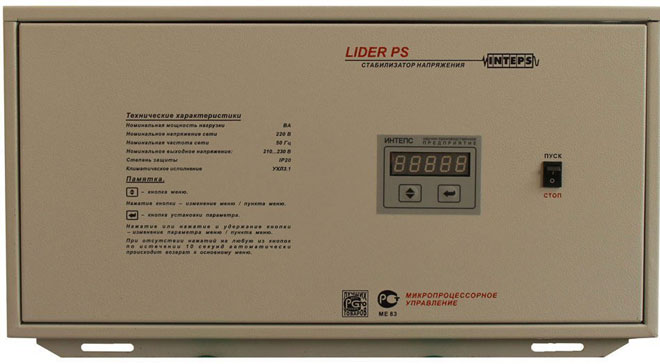
Stihl. The company specializes in the production of power supply units and is one of the leaders. It produces relay, thyristor and the most modern inverter stabilizers. This is an accurate, silent, with a wide range of incoming voltage devices. The main advantages of the inverter devices is their reliability and durability.
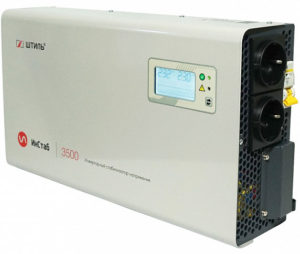
Ukrainian brand stabilizers Volter. Have proven themselves as reliable and high-quality products. The company manufactures semiconductor devices with stepless stabilization. Due to the proprietary design, the devices react very quickly to changes in the incoming voltage and adjust to the load. The lower threshold of 110 volts and the upper 330 volts make them indispensable in rural areas. Protect against overvoltage, even in Bypass mode.
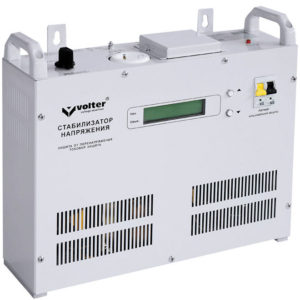
Byelorussian products ZORD are made with 100% Chinese stuffing. Therefore, despite the good characteristics and the Belarusian brand name has only one advantage - a small cost. Reviews about these stabilizers are controversial.
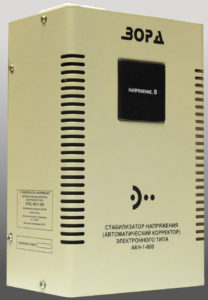
Chinese stabilizers Resanta. They have average characteristics. Popular due to the low cost, availability and a wide choice.
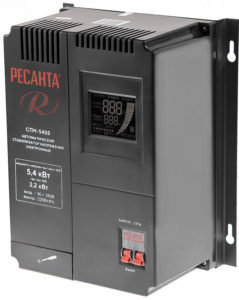
ORTEA. Italian company produces a wide range of excellent products. Despite their southern origin, they confidently work at low temperatures. This is the only manufacturer of stabilizers from Europe. Quality products and reliable service compensate for the high cost.
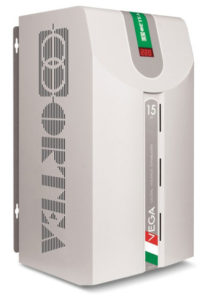
One stabilizer for all customers or one for each individual?
Individual stabilizers are advantageous to buy if you need to protect a maximum of three devices or can not install one large one. Modern heating boilers, expensive refrigerators and electronics can be connected separately.
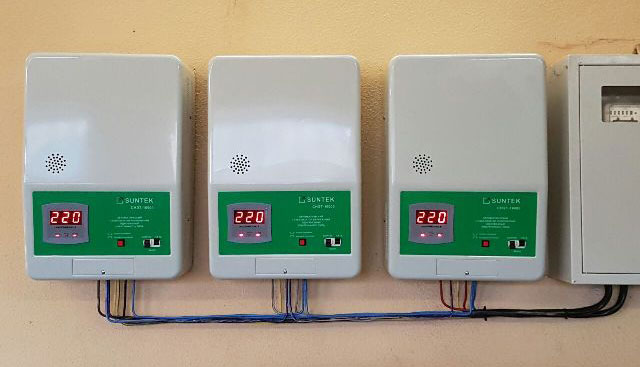
If you want to supply stabilized voltage to more equipment, it is advisable to buy one large stabilizer.
Common mistakes when choosing
Incorrect power calculations. You should make a list of your appliances. Check and specify their power. Recalculate the totals a couple of times. Check the results with a consultant before buying.
Buying cheap and "good". The miser pays twice. In the case of buying an inexpensive voltage regulatorYou can pay more. Low-quality stabilizer can burn the equipment and the entire household.
Lack of a service center nearby. Everything breaks down and requires service. Service should be as close as possible.
Buying a voltage regulator is a responsible event. Nevertheless, it is not difficult to determine the necessary characteristics and parameters. The main thing is not to rush, carefully study the peculiarities of your network and electrical equipment. Choose a device from a reputable company and it will serve you well for a long time.
Related articles:
